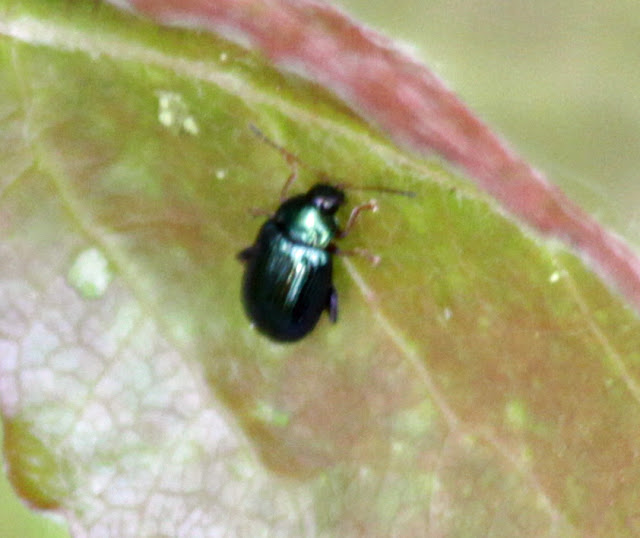I managed to get a few blurry photos of the tiny metallic beetles on the aspen stand by the Victoria Road entrance to the access trail this evening. I tentatively identified them as Phratora, a genus of leaf beetles, but Christian correctly identified them as Crepidodora species, a genus of flea beetles.
I wonder if the photograph above may be showing a male?
Crepidodera does seem to fit well the longitudinal striae of punctures on the elytra, the orange legs and antennae and the swollen hind femurs adapted for jumping. The host plant and the overall appearance would tend to point me towards Crepidodera aurea perhaps, but I would really need a specimen to get a reasonable ID.
Work in the Czech Republic indicates that aspen is the preferred host, and that sweeping does catch most beetles in the evening as opposed to at midday - they may be nocturnal. The adults are thought to hibernate in the soil or leaf litter, and emerge in April/May. They then feed and reproduce, and new adults emerge from the soil again in mid summer, causing more damage towards the end of the growing season, or hibernate through until the following year. Males predominated first, then females, then males again.










































